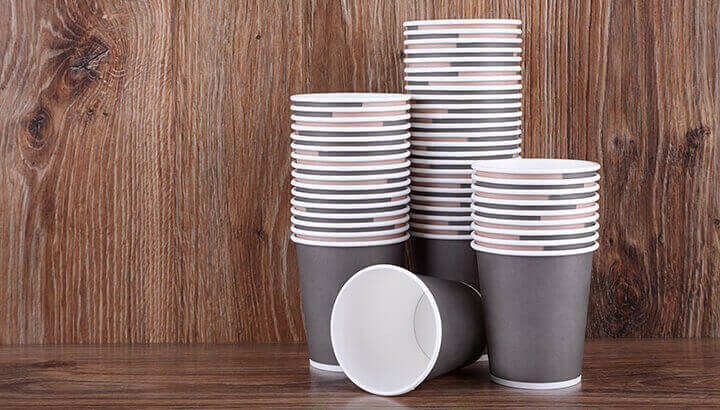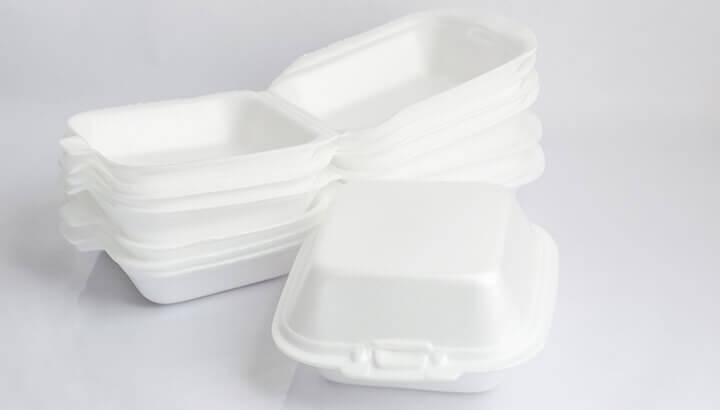
Upcycling is reusing an old item in a way other than its original purpose. The goal is to prevent it from ending up in a landfill or with a wasteful fate. On the surface, upcycling seems like a great way to reduce waste and consumption. However, the majority of examples and suggestions on how to upcycle items are usually just a mild step above throwing it in the trash.
The internet is filled with tutorials on how one can “upcycle” plastic bags to make little flowers or art projects. Unless you want to live in a home filled with plastic arts and crafts, these upcycling projects aren’t practical. Assuming that someone eventually throws the items out (either a friend, family member or producer from the show “Hoarders”) that plastic craft will end up in a landfill eventually anyway.
What we really need is for practical and useful ways to reuse common non-recyclable items such as plastic bags, Styrofoam and disposable coffee cups. Here are some ideas on how to prevent our most common items from ending up in landfills:
Upcycling with plastic bags
Plastic bags are problematic for people wishing to reduce the amount of waste that they send to landfills. While plastic bags are technically made from recyclable material, they are most likely not accepted at your local recycling center. This is because plastic bags wreak havoc on the sorting machines at recycling facilities — they get stuck in all sorts of different places throughout the process. As a result, most recycling centers do not accept them. There are ways to recycle plastic bags, but it involves dropping them off at locations that might not be convenient for you.
Turn plastic bags into plastic sheets
You can turn plastic bags back into a useable product fairly easily. Here’s how to create a thicker, more useful piece of plastic sheeting:
1. Preheat the oven to 400°F.
2. Cut off the handle areas from the bags (you can reuse this plastic later as well).
3. Line four bags on top of each other. Make sure they are stretched out and laying flat on top of each other.
4. Set an iron to medium heat and press down on those suckers like they are your favorite pair of wrinkled pants. If after a few once-overs the bags aren’t sticking together, turn up the heat on the iron. If holes or bubbles start to form on the bags, turn the heat down.
5. At this point, you will have a plastic sheet, but it won’t be very sturdy. To make it sturdier, place it on a baking sheet and cover it on top and bottom with parchment paper. Put another baking sheet on top and weigh it down with a brick or a rock.
6. Bake the plastic sheet in the oven for 30 minutes.
7. Take the plastic out of the oven and tell your family you baked a plastic cake and pretend to put icing on it. They won’t find it funny, but it’s not about them.
Do this with as many bags as you want. You’ll have plastic sheeting for all your craft and home improvement projects without ever having to purchase any.
Upcycling disposable coffee cups

Disposable coffee cups are usually not recyclable, although some coffee chains are looking into possible ways to change this. Coffee cups are normally not accepted as part of curbside recycling either. This is due to a thin layer of wax on the inside of the cup that is used to prevent the liquid from making the cup soggy. The wax prevents it from being recyclable. People often believe that these cups can be thrown in with their curbside blue bin program, only for them to be tossed into a landfill later on.
A common upcycling use for disposable coffee cups is using them as “scoopers” for soil, food or any type of grain-like substance. You can also use disposable coffee cups as pen holders, small planters for your garden and decorated lamp shades.
If you want to find a truly productive use for your cups, the best thing to do is shred them and use them in your compost. Many coffee shops will carry cups that have plant-based coatings, making them perfectly suitable to use in your compost. Compostability information is normally listed on the bottom.
One rather ingenious company has actually started placing seeds in their cups so people can plant them after they are finished using them. Eventually, the cups will turn into trees. Now that is upcycling!
Upcycling Styrofoam

Inventing Styrofoam was a very poor decision, but we made it and now that stuff is everywhere. It is accumulating along our waterways. It is in the digestive system of birds and wildlife. Ultimately, it will make its way into our digestive system as well. Styrofoam does not biodegrade. If it does, it takes millions and millions of years to do so. That is why it is so great at holding wanton soup.
Its composition also makes it very difficult to recycle. As a result, we have a lot of this stuff laying around. Take great care to make sure as little of it as possible ends up in our landfills, groundwater and any other nooks and crannies of the ecosystem.
Instead of throwing away Styrofoam, you can use it in your garden. The same features that make Styrofoam great at holding takeout food make it great for using as planters. Martha Stewart has even developed a way to make a soil-less hydroponic garden using old Styrofoam coolers. Other folks have found a way to turn Styrofoam coolers into little mini air conditioners as well.
Should you find you just can’t put all that Styrofoam to good use, there are drop-off locations available that will prevent more of it from getting into landfills.
It is possible to get sustainable use out of non-recyclable items. Sometimes, you just have to be a little crafty.
— Ian Carey

